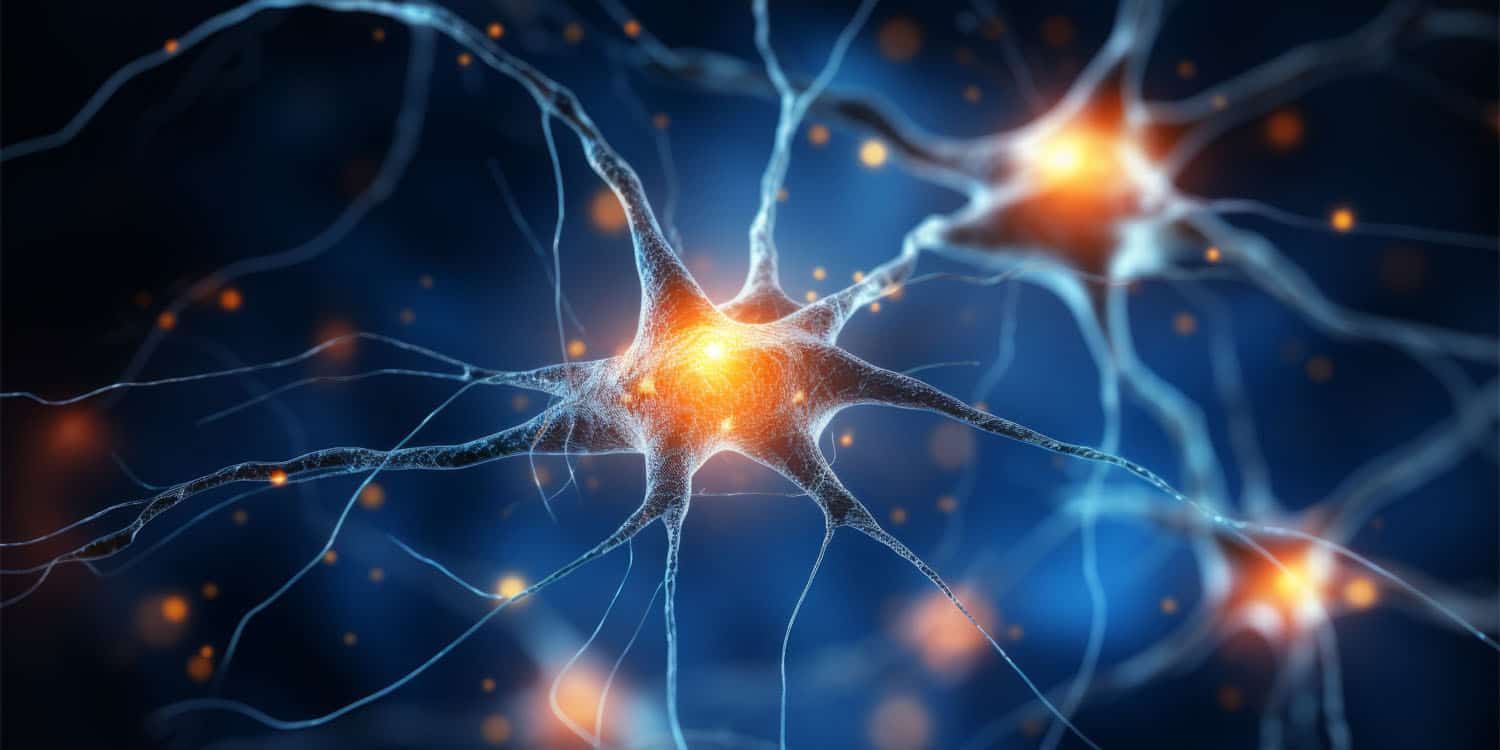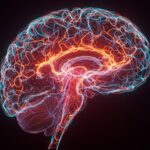A new study published in Brain, Behavior, and Immunity has found that inflammation in a key memory center of the brain can change motivated behavior in mice, and these changes occur differently in males and females. The research shows that when an inflammatory substance is introduced directly into the hippocampus, it alters how mice learn to seek food and even affects basic movement patterns, with female mice showing some unique changes compared to their male counterparts.
Alzheimer’s disease, multiple sclerosis, and depression are just a few of the conditions that share a common trait: inflammation in the hippocampus. This inflammation is thought to interfere with everyday behaviors, affecting the drive to seek food, perform routine tasks, and pursue personal goals.
Despite this connection, it remains uncertain whether inflammation by itself is enough to cause these behavioral changes. In most of these disorders, inflammation occurs alongside other brain abnormalities, making it difficult to pinpoint the exact role of inflammation in altering behavior.
To clarify this issue, lead author Kiruthika Ganesan, together with her PhD supervisor Laura A. Bradfield and their research team, focused exclusively on the impact of inflammation. Their study was designed to determine whether inflammation alone could be responsible for the differences in behavior observed in these conditions.
“I am a behavioural neuroscientist with an interest in the behavioural and brain mechanisms of action control,” explained Bradfield, a senior research fellow at the University of Technology Sydney.
“Prior to this study, I reported a finding that a transgenic mouse model of Alzheimer’s showed behavioural deficits (1) . From this study, we wanted to know if it was neuroinflammation that caused these behavioural deficits (the prior study suggested a correlation, here we tested causation). The fact that it did so in a sex-specific manner was a complete surprise, as the prior transgenic mice looked similar in females and males, although they were older.”
The researchers conducted a series of experiments, starting with cells grown in the laboratory. They began by studying neurons from the hippocampus in isolation, in what is known as a monoculture. They exposed these pure neuron cultures to a substance called lipopolysaccharide, which is known to trigger inflammation. Interestingly, they found that lipopolysaccharide applied directly to these neurons did not significantly alter their activity levels.
However, when they repeated the experiment using cultures that contained a mix of neurons and glial cells – the support cells of the brain, including astrocytes and microglia – they observed a different result. In these mixed cultures, the same inflammatory substance did increase neuronal activity. This initial finding suggested that glial cells, specifically astrocytes, might play a role in how inflammation affects neurons and subsequently behavior.
Following these cell culture experiments, Ganesan, Bradfield and their colleagues moved to studying live mice. Young adult male and female mice underwent a precise surgical procedure where lipopolysaccharide was injected directly into the dorsal hippocampus, the part of the hippocampus involved in learning and memory. A control group of mice received injections of saline, a harmless solution. After the injections, the animals were given time to recover, and then they were placed in special test chambers to measure different aspects of motivated behavior.
The researchers examined instrumental food-seeking by teaching the mice to press two different levers, each of which delivered a distinct food reward. Over several training sessions, the animals learned that pressing one lever produced a small food pellet while pressing the other delivered a sugar solution. After a few days of training, the scientists carried out a test in which one of the food rewards was made less desirable by allowing the mice to eat it until they were full. The idea was that a mouse relying on goal-directed behavior would press the lever for the food it still wanted rather than the food it had just eaten.
The findings showed that female mice with inflammation pressed the levers more frequently than their control counterparts, suggesting that the inflammatory treatment led them to work harder to obtain food. Moreover, both male and female mice that received the inflammatory treatment showed a more pronounced preference for the lever linked to the more desirable food reward during the early test, which indicated an accelerated shift toward goal-directed behavior.
“As mentioned before, we did not expect sex differences at all (we have a study looking at neuroinflammation in a different part of the brain, the striatum, and found no sex differences in that study), so that was a surprise,” the researchers told PsyPost.
“The fact that goal-directed learning was accelerated rather than impaired (in both male and female mice) was also a surprise. We gave several potential reasons for this in the discussion, including the age of the animals, and the fact that accelerated learning in this case may not actually be a good thing, but rather could represent an imbalance between goal-directed and habit learning.”
Another test focused on the natural tendency of mice to approach areas where food is usually delivered. In this case, the researchers measured the number of times the mice poked their heads into the food magazine—the spot in the operant chamber where food rewards were normally dispensed.
During the initial training days, when food was still being provided, the number of these “head entries” was similar among all groups of mice. However, when the animals were later tested in a situation where food was no longer delivered, a clear sex-specific pattern emerged. Female mice that had been given the inflammatory substance made fewer head entries, suggesting that the inflammation disrupted their memory or expectation of food delivery. By contrast, male mice with inflammation made more head entries than their control peers, implying that their recall of the food-associated location was enhanced. This divergence indicates that the inflammatory treatment affects the way male and female mice remember and respond to cues related to food.
A further behavioral assessment involved placing the mice in an open arena to measure their overall activity and levels of anxiety. In this open field test, each mouse was allowed to explore a large, unobstructed space while its movements were tracked. The total distance traveled during a ten-minute session provided a measure of general activity.
In this test, mice that had received the inflammatory treatment in the hippocampus moved a greater overall distance than those that received a control injection, regardless of their sex. This finding suggests that the inflammation boosted the animals’ basic level of locomotion.
Additionally, the researchers looked at how much time the mice spent in the center of the arena compared to the edges. Typically, spending more time in the open center is interpreted as a sign of reduced anxiety, while sticking to the perimeter suggests increased anxiety. Here, male mice generally spent more time in the center than female mice. The inflammatory treatment did not alter these patterns, indicating that while the treatment increased movement, it did not directly change the animals’ anxiety-like behaviors.
After completing the behavioral assessments, the researchers examined the brains of the mice to see if the injections had indeed caused inflammation and to explore any changes in brain cell activity. They prepared thin slices of the dorsal hippocampus and used special staining techniques to look for markers of inflammation.
The scientists found higher levels of a protein associated with inflammation, known as tumor necrosis factor alpha, in the brains of the mice that had received the lipopolysaccharide injection. They also observed changes in the appearance of microglia and astrocytes, the supportive cells in the brain that become activated during inflammation.
Importantly, the amount of neuronal activation—as indicated by a marker called c-Fos—changed in opposite ways depending on the sex of the animal. In female mice, the inflammatory challenge led to increased neuronal activity, while in males, the same treatment resulted in reduced activity. This pattern is particularly interesting because it may explain why the behavioral effects of inflammation differed between the sexes.
“The glia-neuron interactions were also surprising,” Ganesan and Bradfield said. “The fact that neuroinflammation appeared to cause a sexually-dimorphic effect on neuronal activation in males and females (i.e. increasing it in females and decreasing it in males) is a potentially very important finding, that could underlie a lot of sex differences in diseases that feature hippocampal neuroinflammation. Neuroinflammation also caused morphological changes (i.e. changes in the shape of) in glial cells as well as in the expression of cytokine TNF-α that were sex specific.”
Together, the findings indicate that “chronic neuroinflammation alone causes multiple behavioural changes, and these can be the opposite in males and females,” the researchers explained. “For instance, one of our findings was that neuroinflammation improved food approach memories in male mice but impaired it in female mice. Given that Alzheimer’s disease – a disease that features both neuroinflammation and memory deficits – is twice as prevalent in females than males, this finding suggests that chronic neuroinflammation could be particularly harmful to females and could possibly underlie the higher rates of diagnoses.”
But the study, like all research, has some limitations. Using lipopolysaccharide to induce inflammation is a common experimental method, but it is not identical to the complex inflammatory processes that occur in human diseases.
“The work being done in mice obviously brings into question whether these effects would apply similarly in humans,” Ganesan and Bradfield noted. “By the same token, although lipopolysaccharide is very commonly used in research to induce neuroinflammation, whether it does so in a physiologically relevant manner is questionable (i.e. does the neuroinflammation we see in mice really match that induced in humans through more natural causes such as infection or injury? It’s impossible to say).”
Looking ahead, the authors hope to extend their work by investigating how long-lasting these effects on behavior and neuronal activation might be. They are also interested in exploring whether changes in the structure of neurons, such as the density of connections on their branches, are affected by inflammation in a sex-specific manner.
“Currently we are investigating dendritic spine density in the hippocampus of male and female rats that have neuroinflammation in one hemisphere, and have behavioural training (versus controls), and are again finding some interesting sex differences,” Ganesan and Bradfield said. “We don’t see these sex differences after inducing neuroinflammation in the striatum. Indeed, in humans, diseases that feature hippocampal neuroinflammation in particular (e.g. major depressive disorder, multiple sclerosis, Alzheimer’s) seem to be more prevalent in females. I would like to know what it is that is unique about the hippocampus that makes it so susceptible to these sex/gender differences. In the longer term, I would of course love to figure out a way to treat and/or prevent the behavioural deficits that occur as a result of hippocampal neuroinflammation.”
Bradfield added: “The first author of the study, Kiruthika Ganesan, is an extremely talented researcher. She was my PhD student when she ran the study but is about to take up a new postdoctoral position in Germany and I’m super proud of her!”
The study, “Hippocampal neuroinflammation induced by lipopolysaccharide causes sex-specific disruptions in action selection, food approach memories, and neuronal activation,” was authored by Kiruthika Ganesan, Sahar Ghorbanpour, William Kendall, Sarah Thomas Broome, Joanne M. Gladding, Amolika Dhungana, Arvie Rodriguez Abiero, Maedeh Mahmoudi, Alessandro Castorina, Michael D. Kendig, Serena Becchi, Veronika Valova, Louise Cole, and Laura A. Bradfield.




